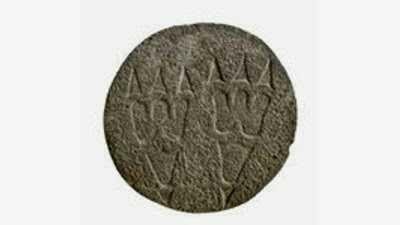New Mystery of the Olmec Civilization, Discovery of Basalt Disk
Archaeologists who unearted the ruins of the Olmec civilization in the town of San Lorenzo Tenochtitlan found a Basal Disk with two molds engraved with eagle claws.
In addition they also found a broken statue in the shape of a jaguar with open mouth and one foot looks damaged.
These two artifacts are thought to be the masterpieces of the Olmec civilization about three thousand years ago and are linked to the mysterious culture that remains unresolved today.
Currently estimated around 25 percent of the palace complex of Olmectersebut has been excavated, there are many inventions of artifacts that surprise archaeologists.
In this region also has been believed to be a mysterious place, archaeologists believe the region as a ceremonial center of the Olmec.
#Findings of Basalt Disk of Olmec Civilizations
As the age enters the Pre Hispanic priode in the state of Veracruz, there are four Indian cultures that are of historical importance.
Huastec and Otomi are in the North, and Totonac is in the north and central regions. While the Olmec civilization is representative of one of America's oldest cultures dominates the south.
They controlled the coastal plains of Veracruz and Tabasco from about 1000 BC to 300 BC.
Several Olmec cultural centers have been found in Veracruz including those in the towns of San Lorenzo and Tres Zapotes.


According to the news Pravda.ru "New mysteries of Olmecs: Basalt disk" published on December 9, 2013, excavations in this region have found surprising oddities, when a series of brick statues were found earlier or during the excavation underway they found a form of sequence that stretched from north to south. In addition, every monument found in the town of San Lorenzo is deliberately damaged or indeed damaged, then red pebbles are placed on the bed and covered with a thick layer of soil and garbage.
The results of excavations conducted on both historic cities in Veracrus have been identified as the most complex of settlements, where ritual ceremonies are often performed on the Mesoamerican period.
Some archaeologists even consider the culture of Olmec civilization to be an early culture or culture that gave birth to tradition in Central America.
This is based on the findings of the towns of San Lorenzo and Tenochtitlan as the ancient capital of Olmec civilization, the construction of this town is estimated around 1800 BC and the peak of prosperity occurred in 1000 BC to 1400 BC.
It is estimated that the area of the city at that time is around 2200 square meters and the settlement is permanently built up to 1200 people.
According to Valery Gulyave Phd, a professor of historical science and an ancient civilization expert from the RAS Institute of Archeology, all the buildings and facilities ever built during the heyday of the Olmec are currently buried in the hills of the land.
The building stands on flat ground located on a steep and steep plateau to a height of nearly 50 meters.
The culture and tradition of Olmec is famous for its Basalt head sculpture, some of which are estimated to weigh nearly 40 tons with a height of three meters. The Basalt material is obtained from a mine located far from the center of civilization, some 80 kilometers estimated to be using a raft for the delivery of the basalt.
In addition to the Basalt mine's use, pyramids are found among Olmec settlements, and the culture of Olmec civilization has also made cultivation of crops and fishing around 300 BC.
In this excavation, archaeologists claimed to have found a basalt disk with a diameter of 61 centimeters, two prints carved to resemble eagle claws and a 300-kilogram damaged sculpture of jaguar with open mouth and forelegs stepping, but one of the legs was broken.
It is possible that the found object is from remote areas and is greatly appreciated.
Olmec civilization has no habit of disposing of damaged objects but they use them to create new works of art.
Whatever objects have been found in that historic place, will add to a series of mysteries of the Olmec civilization that have not been fully resolved.
One of them, until now archaeologists still do not know the cause of civilization Olmec destroyed without remaining.
Very good post